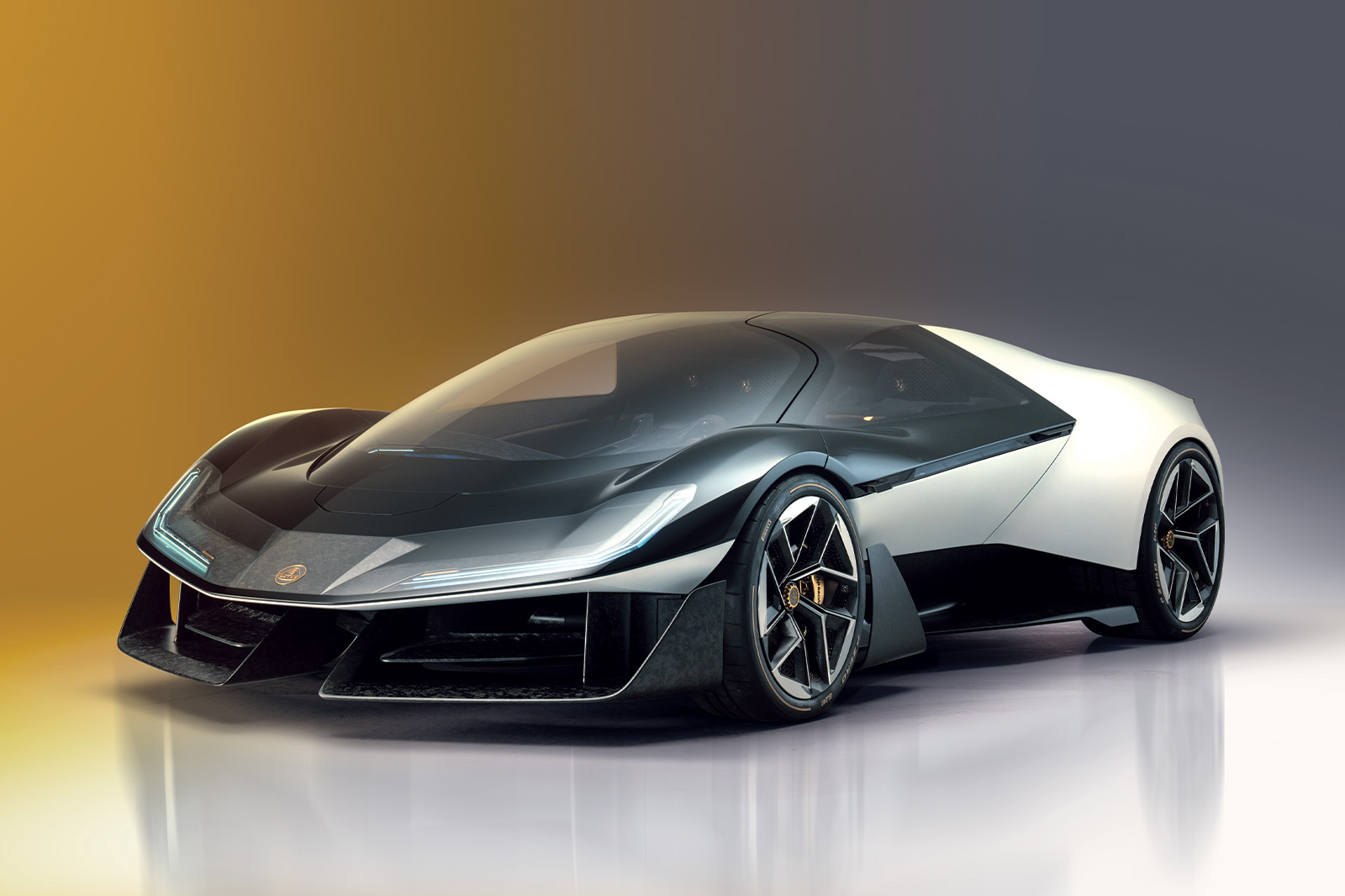Much of the other running gear of the car comes from proven partners: AP Racing, which worked with Lotus’s F1 team on the 49, provides the six-piston caliper brakes, while the car sits on Pirelli P Zero Elect tyres.
The wheels are 20in front and 21in rear. There is steer-by-wire technology and doublewishbone suspension at both ends of the car.
Lotus Theory 1 interior design
The Theory 1 adopts a similar three-seat layout to that of the McLaren F1, with the driver positioned forward and centrally, and the two passengers slightly behind on either side.
In a bid to improve sustainability, Lotus designers aimed to use only 10 ‘A-surface’ (visible) materials, compared with around 100 in an average car.
One key element of that was leaving much of the interior bare to showcase the recycled chopped carbonfibre tub, and the seats are sculpted directly into that. In another nod to Lotus’s F1 heritage, the key functional components both inside and outside the car are coloured gold.
There is only minimal padding for the seats. Interior design chief Ben Hall said: “We looked at pressure maps of how people sit in our current cars to define the minimum requirements and ensure they had sufficient support.”
Because the driver’s seat is fixed, the steering wheel and pedals automatically retract and extend to fit the driver. The minimalist interior goes without an infotainment screen or traditional display. There is a small screen on the steering wheel, and the speedometer sits under the lip of the windscreen, within the driver’s eyeline.
The car also uses new technology to minimise functions. OLED lights can signal when to turn, while a system called Lotuswear, developed with start-up Motorskins, features small inflatable pads in the seat and steering wheel that can offer haptic feedback prompts.


